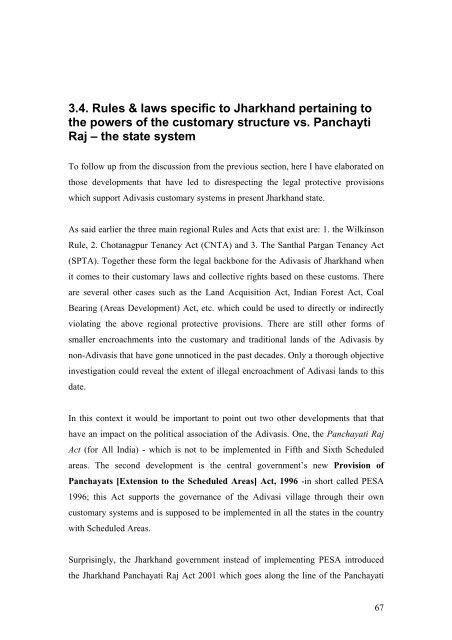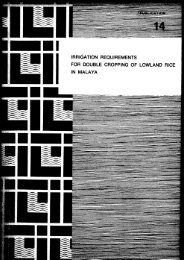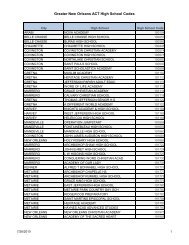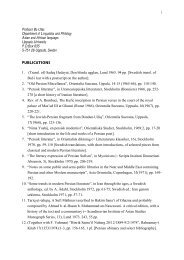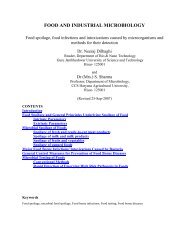On the Future of Indigenous Traditions - Munin
On the Future of Indigenous Traditions - Munin
On the Future of Indigenous Traditions - Munin
You also want an ePaper? Increase the reach of your titles
YUMPU automatically turns print PDFs into web optimized ePapers that Google loves.
3.4. Rules & laws specific to Jharkhand pertaining to<br />
<strong>the</strong> powers <strong>of</strong> <strong>the</strong> customary structure vs. Panchayti<br />
Raj – <strong>the</strong> state system<br />
To follow up from <strong>the</strong> discussion from <strong>the</strong> previous section, here I have elaborated on<br />
those developments that have led to disrespecting <strong>the</strong> legal protective provisions<br />
which support Adivasis customary systems in present Jharkhand state.<br />
As said earlier <strong>the</strong> three main regional Rules and Acts that exist are: 1. <strong>the</strong> Wilkinson<br />
Rule, 2. Chotanagpur Tenancy Act (CNTA) and 3. The Santhal Pargan Tenancy Act<br />
(SPTA). Toge<strong>the</strong>r <strong>the</strong>se form <strong>the</strong> legal backbone for <strong>the</strong> Adivasis <strong>of</strong> Jharkhand when<br />
it comes to <strong>the</strong>ir customary laws and collective rights based on <strong>the</strong>se customs. There<br />
are several o<strong>the</strong>r cases such as <strong>the</strong> Land Acquisition Act, Indian Forest Act, Coal<br />
Bearing (Areas Development) Act, etc. which could be used to directly or indirectly<br />
violating <strong>the</strong> above regional protective provisions. There are still o<strong>the</strong>r forms <strong>of</strong><br />
smaller encroachments into <strong>the</strong> customary and traditional lands <strong>of</strong> <strong>the</strong> Adivasis by<br />
non-Adivasis that have gone unnoticed in <strong>the</strong> past decades. <strong>On</strong>ly a thorough objective<br />
investigation could reveal <strong>the</strong> extent <strong>of</strong> illegal encroachment <strong>of</strong> Adivasi lands to this<br />
date.<br />
In this context it would be important to point out two o<strong>the</strong>r developments that that<br />
have an impact on <strong>the</strong> political association <strong>of</strong> <strong>the</strong> Adivasis. <strong>On</strong>e, <strong>the</strong> Panchayati Raj<br />
Act (for All India) - which is not to be implemented in Fifth and Sixth Scheduled<br />
areas. The second development is <strong>the</strong> central government’s new Provision <strong>of</strong><br />
Panchayats [Extension to <strong>the</strong> Scheduled Areas] Act, 1996 -in short called PESA<br />
1996; this Act supports <strong>the</strong> governance <strong>of</strong> <strong>the</strong> Adivasi village through <strong>the</strong>ir own<br />
customary systems and is supposed to be implemented in all <strong>the</strong> states in <strong>the</strong> country<br />
with Scheduled Areas.<br />
Surprisingly, <strong>the</strong> Jharkhand government instead <strong>of</strong> implementing PESA introduced<br />
<strong>the</strong> Jharkhand Panchayati Raj Act 2001 which goes along <strong>the</strong> line <strong>of</strong> <strong>the</strong> Panchayati<br />
67


